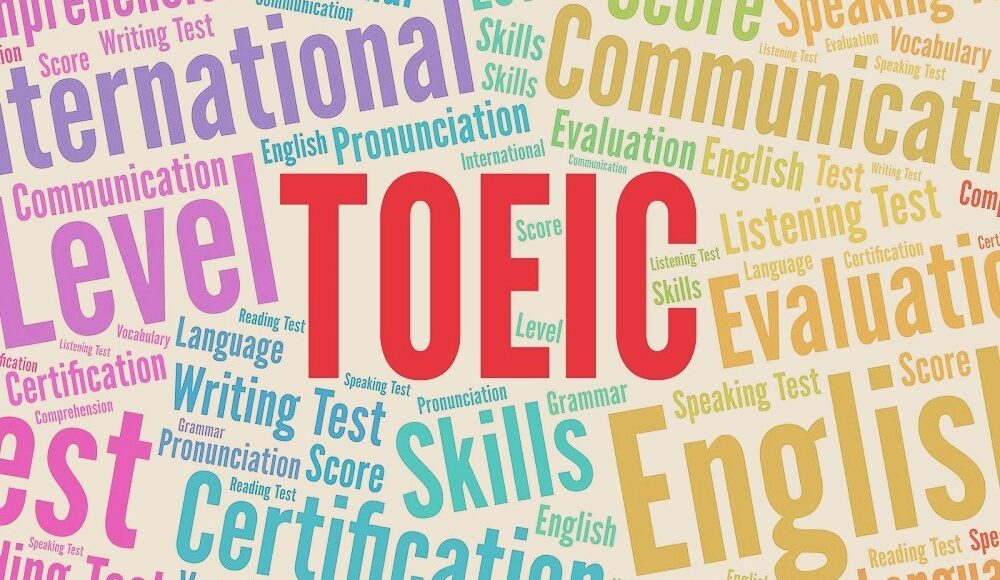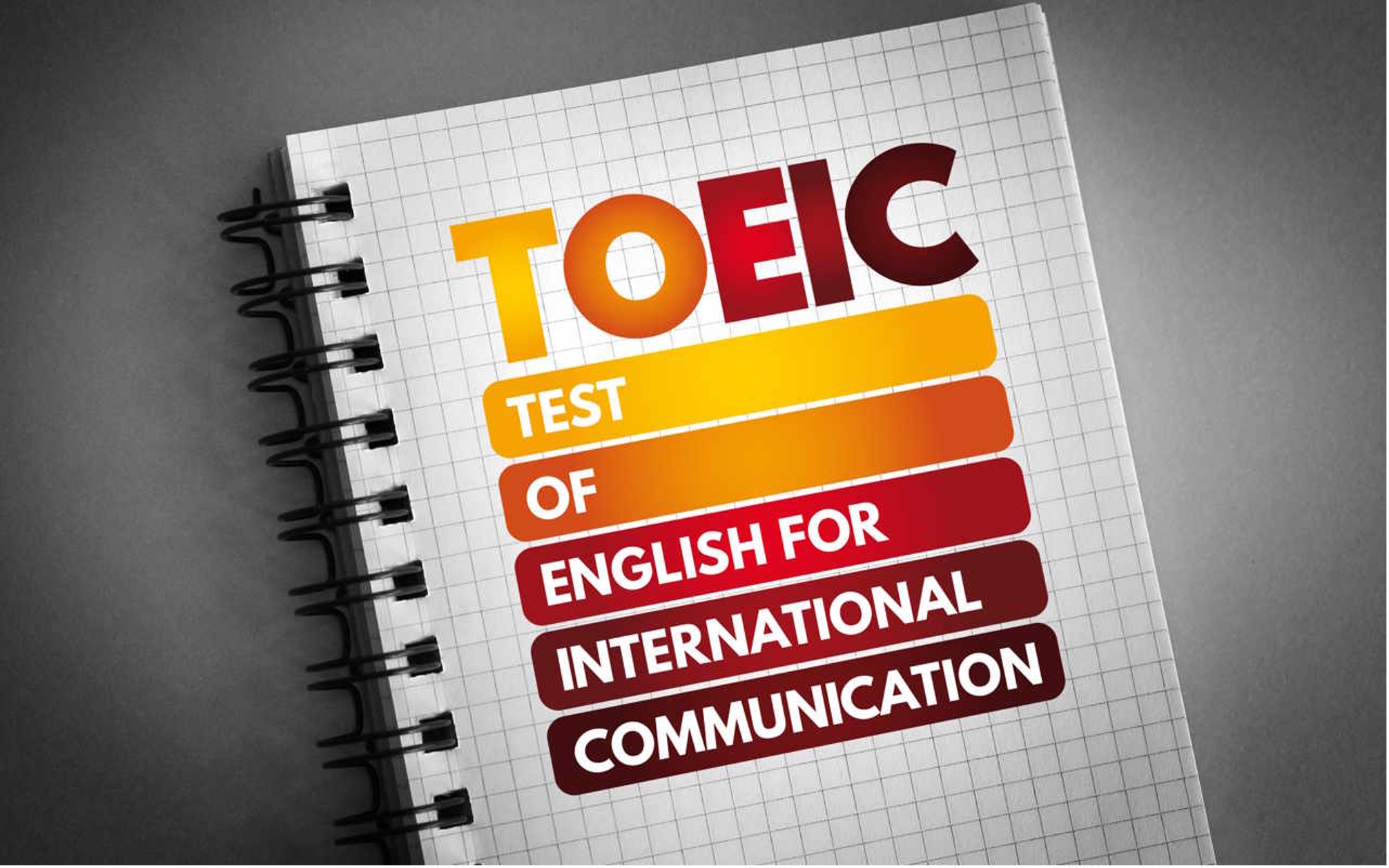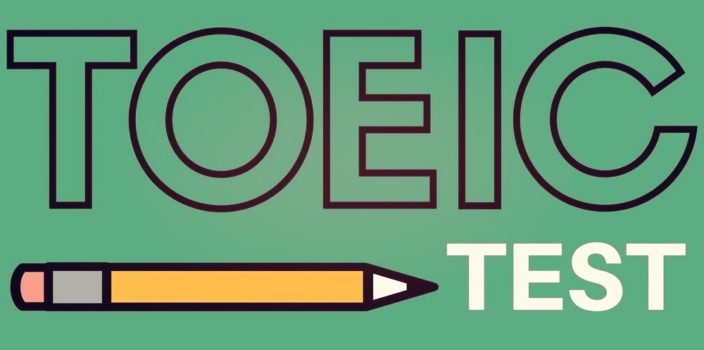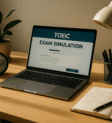
TOEIC Test Structure: Complete 7-Part Breakdown with Time Management Guide
Master every section of the TOEIC Listening and Reading Test with proven strategies and expert insights
#TOEIC2025 #EnglishPrep #ExamSuccess #TOEICStructure #BusinessEnglish
Understanding the TOEIC Test Format
The Test of English for International Communication (TOEIC) Listening and Reading Test is a standardized assessment that measures your English proficiency in workplace contexts. Understanding the TOEIC test structure is crucial for developing an effective preparation strategy that maximizes your score potential.
The test consists of exactly 200 questions divided into seven distinct parts across two main sections: Listening (Parts 1-4) and Reading (Parts 5-7). Each section tests different language skills, from basic comprehension to complex analytical thinking in English business environments.
Start Your TOEIC Preparation Today

Key TOEIC Test Facts
- Total Duration: 2 hours (120 minutes)
- Question Count: 200 questions total
- Score Range: 10-990 points
- Test Format: Multiple choice only
- Frequency: Available year-round at authorized centers
- Validity: Scores valid for 2 years from test date
| Section | Parts | Questions | Time Limit |
|---|---|---|---|
| Listening | 1-4 | 100 | 45 minutes |
| Reading | 5-7 | 100 | 75 minutes |
Each part of the TOEIC test targets specific language competencies that reflect real-world business communication scenarios. From understanding workplace conversations to analyzing complex business documents, the TOEIC parts explained in this guide will help you approach each section with confidence and strategic precision.
TOEIC Listening Section: Parts 1-4 Breakdown
The TOEIC Listening section evaluates your ability to understand spoken English in various workplace scenarios. This section runs for exactly 45 minutes and includes audio recordings that you’ll hear only once. Success requires focused attention and strategic answer selection.

Part 1: Photographs (6 Questions)
In this opening section, you’ll view a photograph and listen to four descriptive statements. Your task is identifying which statement most accurately describes what you see in the image. This part tests your ability to understand basic vocabulary related to people, objects, locations, and activities.
Part 1 Success Strategy
- Study the photograph carefully before the audio begins
- Focus on people, objects, and actions visible in the image
- Watch for similar-sounding words that might be distractors
- Eliminate obviously incorrect answers quickly
- Pay attention to verb tenses (present progressive vs. simple present)
Part 2: Question-Response (25 Questions)
This section presents the greatest challenge for many test-takers. You’ll hear a question or statement followed by three possible responses, with no visual aids to guide you. The key to success lies in understanding the logical connection between questions and appropriate responses.
| Question Type | Example | Strategy |
|---|---|---|
| Wh-Questions | “Where is the meeting?” | Listen for location words in responses |
| Yes/No Questions | “Did you finish the report?” | Expect direct or indirect answers |
| Choice Questions | “Will you drive or take the train?” | Look for selection of one option |
Part 3: Conversations (39 Questions)
Part 3 features conversations between two or three speakers, typically in business settings like offices, restaurants, or retail environments. Each conversation is followed by three questions that test your understanding of details, speaker intentions, and implied meanings.
Part 3 Critical Tips
- Use the direction time to preview questions and answer choices
- Listen for keywords that match the questions
- Pay attention to speaker roles and relationships
- Don’t overthink – first impressions are often correct
Part 4: Talks (30 Questions)
The final listening section presents monologues such as announcements, advertisements, voice mail messages, or business presentations. Like Part 3, each talk includes three comprehension questions that require careful attention to specific details and overall context.
Common talk types include company announcements, travel information, product advertisements, news reports, and instructional messages. Understanding the speaker’s purpose and target audience helps predict the type of information you’ll need to identify.
TOEIC Reading Section: Parts 5-7 Breakdown
The Reading section spans 75 minutes and tests your grammar knowledge, vocabulary, and reading comprehension skills. Unlike the Listening section, you control the pacing, making time management absolutely critical for success. This section represents 50% of your total TOEIC score.
Part 5: Incomplete Sentences (30 Questions)
This grammar-focused section requires you to complete sentences by choosing the correct word or phrase from four options. Questions test various grammar points including verb tenses, prepositions, conjunctions, word forms, and vocabulary in context.
| Grammar Focus | Question Frequency | Key Strategy |
|---|---|---|
| Parts of Speech | 8-10 questions | Identify word function in sentence |
| Verb Forms | 6-8 questions | Check subject-verb agreement and tense |
| Prepositions | 4-6 questions | Learn common preposition patterns |
Part 5 Time Management Alert
Spend no more than 20 seconds per question in Part 5. If you’re unsure, make your best guess and move forward. Spending too much time here jeopardizes your performance in Parts 6 and 7, which carry more weight.
Part 6: Text Completion (16 Questions)
Part 6 combines grammar and reading comprehension by presenting four incomplete texts with four questions each. You’ll need to choose appropriate words, phrases, or sentences to complete the passages logically and grammatically.
Recent TOEIC format updates have introduced sentence insertion questions, where you must select an entire sentence that fits logically within the passage. This requires understanding not just grammar, but also text flow and coherence.
Part 7: Reading Comprehension (54 Questions)
The most substantial section of the TOEIC test, Part 7 includes various text types you’d encounter in professional environments: emails, letters, articles, advertisements, notices, and forms. Questions range from identifying specific details to making inferences about implied information.
Single Passages (29 Questions)
- Emails and memos
- News articles and reports
- Advertisements and notices
- Forms and schedules
- Text message chains
Multiple Passages (25 Questions)
- Email correspondence series
- Article with related chart/graph
- Advertisement with order form
- Meeting agenda with follow-up memo
- Job posting with application materials
Time Management Strategies for Each Part
Effective time management separates high scorers from average performers on the TOEIC test. Each section requires a different approach based on question types and difficulty levels. Professional test-takers develop systematic timing strategies that ensure completion of all sections.

Listening Section Timing
- Part 1: Use preview time to study photographs thoroughly
- Part 2: Focus entirely on audio – no preview possible
- Part 3: Read questions during directions and between conversations
- Part 4: Preview questions between talks when possible
- Overall: Stay alert throughout – no second chances
Reading Section Timing
- Part 5: Maximum 10 minutes total (20 seconds/question)
- Part 6: 8-10 minutes (30 seconds/question)
- Part 7: 55-57 minutes remaining time
- Buffer: Keep 2-3 minutes for final review
- Priority: Complete all questions before perfecting answers
Professional Time Management Tips
- Practice with a timer: Simulate real test conditions during preparation sessions
- Develop reading speed: Aim for 250-300 words per minute with comprehension
- Master skimming: Quickly identify main ideas in Part 7 passages
- Use elimination: Remove obviously wrong answers to improve odds
- Mark and move: Don’t let difficult questions derail your timing
- Practice transitions: Smooth movement between sections saves valuable seconds
TOEIC Scoring System and Benchmarks
Understanding the TOEIC scoring system helps you set realistic goals and interpret your results effectively. The test uses a scaled scoring system that converts raw scores (number of correct answers) into scaled scores ranging from 5 to 495 for each section.
| Score Range | Proficiency Level | Workplace Capability |
|---|---|---|
| 905-990 | Advanced | Handles complex communication effectively |
| 785-900 | High Intermediate | Manages most workplace situations confidently |
| 605-780 | Intermediate | Communicates adequately in familiar contexts |
Global Score Statistics (2024 Data)
- Global Average: 567 points total
- Listening Average: 295 points
- Reading Average: 272 points
- Top Performing Countries: Singapore (882), India (788), South Korea (753)
- Business Requirement: Most multinational companies expect 750+ for English-language positions
Score interpretation varies significantly by industry and role. International business positions typically require scores of 750-850, while technical roles may accept lower scores if specialized skills compensate. Understanding these benchmarks helps you establish appropriate target scores for your career objectives.
Effective Practice Methods by Section
Strategic practice targeting specific TOEIC parts yields better results than general English study. Each section requires distinct preparation approaches that address its unique challenges and question types.

Listening Practice Strategies
- Daily Audio Exposure: Listen to business podcasts and news reports
- Shadowing Practice: Repeat audio immediately after hearing it
- Accent Familiarity: Expose yourself to various English accents
- Note-Taking Skills: Practice capturing key information quickly
- Prediction Training: Anticipate responses and content
Reading Practice Strategies
- Grammar Drills: Focus on high-frequency TOEIC grammar points
- Speed Reading: Increase reading pace while maintaining comprehension
- Vocabulary Building: Learn business and academic word lists
- Text Type Familiarity: Practice with emails, reports, and forms
- Question Pattern Recognition: Understand common question types
The most effective preparation combines structured study with practical application. Red Swan Tutor’s interactive game platform offers targeted practice that simulates real test conditions while making preparation engaging and measurable.
Choose Your Perfect TOEIC Preparation Plan
Selecting the right preparation intensity depends on your current English level, target score, and available study time. Our structured plans accommodate different schedules while maintaining the rigor necessary for significant score improvements.
1 Month Plan – Intensive Preparation
€30/month
- Two 60-minute sessions per day, 6 days/week
- Complete 2-3 full practice tests weekly
- Rapid skill development with focused feedback
- Ideal for urgent test preparation needs
3 Month Plan – Focused Preparation
€20/month – Recommended
- Two 30-60 minute sessions per day, 5 days/week
- Complete 1-2 full practice tests weekly
- Balanced approach with sustainable progress
- Optimal for most students seeking significant improvement
6 Month Plan – Organized Preparation
€15/month
- One 30-60 minute session per day, 5 days/week
- Complete 1 full practice test weekly
- Steady progress with flexible scheduling
- Perfect for working professionals
12 Month Plan – Regular Preparation
€10/month
- One 30-60 minute session per day, 5 days/week
- Complete 1 full practice test weekly
- Long-term skill building approach
- Excellent value for extended preparation
How to Maximize Your Subscription
- Do a Full TOEIC Test in the Casino: Start by identifying your weak areas through comprehensive assessment in our gamified testing environment.
- Focus on Targeted Skills: Use the Park section to earn dollars while improving your weakest sections. Return to the Casino and play the tables that focus on your identified weak areas.
- Track Your Progress: Regularly monitor improvements through our analytics dashboard and adjust your learning focus based on performance data.
Bonus Tips for Success
- Read Aloud to Boost Confidence: Select a 50-word business text and read it aloud daily for two weeks. This improves pronunciation and reading fluency simultaneously.
- Watch Films & Series in English: Use English subtitles and read them aloud for 20 minutes daily, 5 days per week. This builds listening comprehension and reading speed.
- Play Other Video Games in English: Change your device language settings to English to build vocabulary and comprehension naturally through enjoyable activities.
12-Week Preparation Timeline
A structured timeline ensures comprehensive coverage of all TOEIC sections while building skills progressively. This schedule adapts to different starting levels while maintaining consistent advancement toward your target score.

Weeks 1-2: Assessment and Foundation
Take a complete diagnostic test to establish your baseline score. Focus on understanding the TOEIC format and identifying specific weaknesses. Begin intensive grammar review for Parts 5 and 6, while developing basic listening strategies for Parts 1 and 2.
Weeks 3-4: Skill Building Phase
Concentrate on fundamental skills development. Practice Part 3 conversation strategies and Part 7 single-passage reading. Expand business vocabulary through targeted word lists and contextual learning exercises.
Weeks 5-6: Integration and Speed
Combine skills across sections and begin timing practice. Work on Part 4 talks and Part 7 multiple passages. Develop speed-reading techniques while maintaining comprehension accuracy.
Weeks 7-8: Advanced Strategies
Master complex question types and elimination techniques. Practice inference questions and implicit meaning identification. Refine time management through timed section practice.
Weeks 9-10: Full Test Practice
Complete full-length practice tests under realistic conditions. Analyze performance patterns and adjust study focus. Perfect your pacing strategy for each section.
Weeks 11-12: Final Preparation
Focus on weak areas identified through practice tests. Maintain skills through light review and confidence-building exercises. Prepare mentally and logistically for test day.
Intensive TOEIC Practice: Pros and Cons
Understanding the advantages and limitations of intensive TOEIC preparation helps you make informed decisions about your study approach and time investment.
Advantages of Intensive Practice
- Rapid Score Improvement: Concentrated study often yields 100-150 point increases within 3 months
- Enhanced Test Familiarity: Extensive practice builds confidence and reduces test-day anxiety
- Systematic Skill Development: Structured approach ensures coverage of all essential areas
- Time Efficiency: Focused preparation maximizes learning per hour invested
- Career Advancement: Higher scores open doors to international opportunities and promotions
Potential Drawbacks
- Study Burnout Risk: Intensive schedules may lead to fatigue and decreased motivation
- Narrow Skill Focus: Emphasis on test strategies might limit broader English development
- Financial Investment: Quality preparation materials and courses require significant budget allocation
- Time Commitment: Daily practice demands 1-2 hours minimum, challenging for busy professionals
- Plateau Periods: Progress may stagnate at certain score levels despite continued effort
The optimal approach balances intensive practice with sustainable study habits. Our gamified platform addresses common drawbacks by making practice engaging and preventing burnout through varied, interactive content.
Maximizing Your Study Effectiveness
Beyond structured practice, certain strategies significantly enhance learning efficiency and retention. These professional techniques help you achieve maximum results from your preparation time investment.
Evidence-Based Study Techniques
- Spaced Repetition: Review challenging grammar points and vocabulary at increasing intervals
- Active Recall: Test yourself regularly rather than passive re-reading of materials
- Interleaving: Mix different question types within practice sessions
- Metacognitive Awareness: Monitor your understanding and adjust strategies accordingly
- Error Analysis: Systematically review mistakes to prevent repetition
Technology Integration Tips
- Use mobile learning platforms for consistent daily practice
- Leverage AI-powered feedback for personalized improvement recommendations
- Track progress through detailed analytics and performance dashboards
- Join online study communities for motivation and strategy sharing
Successful TOEIC preparation requires more than knowledge accumulation—it demands strategic thinking, consistent practice, and adaptive learning approaches. Our comprehensive platform provides the tools and support necessary for achieving your target scores efficiently.
— Sarah Chen, Marketing Manager, Singapore
Frequently Asked Questions
How long should I study for the TOEIC test?
The optimal study duration depends on your current English level and target score. Most students need 8-12 weeks of consistent practice to achieve significant improvements. If you’re aiming for a 100+ point increase, plan for at least 2-3 months of dedicated preparation with 1-2 hours daily study time.
What’s the best way to improve my TOEIC Reading score quickly?
Focus on time management and vocabulary building. Practice Part 5 grammar questions daily until you can complete them in 20 seconds each. Build your business vocabulary through contextual learning, and develop speed-reading skills for Part 7. Use elimination strategies to improve accuracy even when uncertain about answers.
How can I overcome TOEIC Listening difficulties?
Develop active listening through daily exposure to business English audio content. Practice prediction strategies by reading questions before audio begins in Parts 3 and 4. Focus on keyword recognition rather than understanding every word. Regular dictation exercises also improve your ability to catch specific details.
Is it worth taking multiple TOEIC practice tests?
Yes, but with strategic purpose. Take one diagnostic test initially, then practice tests every 2-3 weeks to monitor progress. Focus on analyzing mistakes and timing rather than just scoring. Quality analysis of fewer tests yields better results than taking many tests without proper review.
What TOEIC score do I need for international job opportunities?
Most multinational companies require 750-850 points for English-language positions. Engineering and technical roles may accept 600-700 if specialized skills compensate. Management and client-facing positions typically demand 800+ points. Research specific company requirements as standards vary by industry and role level.
Mastering the TOEIC test structure provides the foundation for strategic preparation and score improvement. Understanding each part’s unique challenges allows you to allocate study time effectively and develop targeted skills that directly impact your performance.
Success on the TOEIC test opens doors to international career opportunities, academic programs, and professional advancement. With proper preparation using Red Swan Tutor’s comprehensive platform, you can achieve your target scores efficiently while developing practical English skills for workplace success.
For questions about our TOEIC preparation programs, contact us at support@redswantutor.com
© 2025 Red Swan Tutor. All rights reserved.




